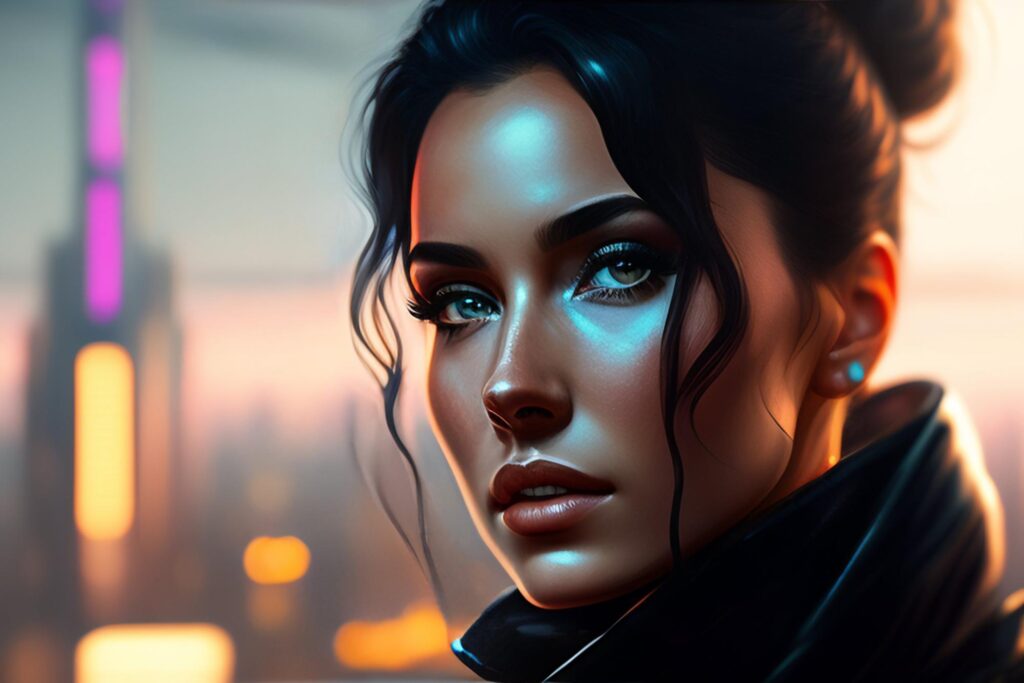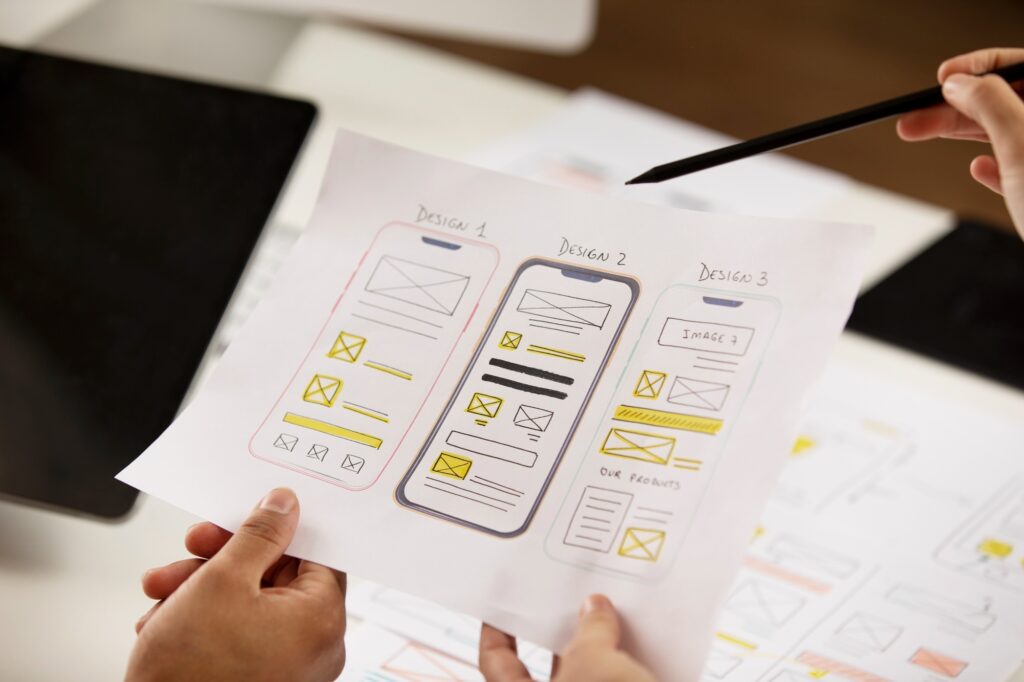Did you know? Content can inspire website design for modern business digital presence.
Indeed, the fusion of compelling content and captivating web design forms the bedrock of a successful online presence. For modern businesses aiming to stand out in a crowded digital sphere, the alignment between content and design is pivotal.
Interestingly, leveraging AI-generated content can serve as a potent source of inspiration for crafting innovative and impactful web designs that resonate with audiences.

The Symbiotic Relationship Between Content and Website Design
Web design is more than just aesthetic appeal; it’s about creating an immersive user experience that seamlessly integrates with the content presented. Content, on the other hand, acts as the soul of a website, providing information, engaging visitors, and driving actions.
When content and design are harmoniously aligned, they elevate each other. The right content can guide design decisions, shaping the layout, visuals, and overall user interface. In turn, an intuitive and visually appealing design enhances the effectiveness of the conveyed content, fostering engagement and leaving a lasting impression on visitors.
AI-Generated Content as a Catalyst for Innovative Web Design
AI-generated content can serv as a valuable resource not only for written material but also as a catalyst for sparking ideas that transcend into web design elements. By harnessing the power of AI-generated content, businesses can derive insights and concepts that inspire the aesthetic and functional aspects of their websites.
72% of consumers reveal that they base their purchasing decisions on a company’s website design and content quality, as stated in a survey by Blue Corona.
Incorporating AI-generated content can spark innovative design ideas. For instance, data-driven insights, industry trends, and consumer behavior patterns derived from AI-generated content can influence the selection of colors, typography, layout structure, and overall visual storytelling on a website. for further reading on ai-generated content>>
How Does It Work Out?
Here are examples showcasing how design trends inspired by AI-generated content can be implemented in modern websites:
1. Minimalistic and Clean Layouts
Content emphasizing clarity and concise information. AI-generated content is really good at sharing information in a simple and clear way. It doesn’t use complicated words and gets straight to the point. It’s like giving you the important stuff without extra fluff. This makes it easy for people to understand quickly, especially if they prefer things short and clear.
Implementation in Web Design:
A modern website might adopt a clean, minimalistic layout inspired by AI-generated content focusing on delivering information efficiently. This design trend often features ample white space, clear typography, and straightforward navigation.
For instance, a business website could showcase its services or products using minimalist design elements, allowing visitors to easily find essential information without visual clutter.
2. Personalized User Experiences:
Personalization cues derived from AI-generated insights into user preferences. By this we’re referring to how AI systems analyze and learn from user behavior, such as browsing history, past interactions, or expressed preferences. These insights help AI understand individual user preferences, allowing it to tailor experiences by offering personalized recommendations, content suggestions, or specific features that align with each user’s interests. In essence, AI uses the gathered information about users to provide more customized and relevant experiences, making interactions with technology feel more individualized and user-centric.
Implementation in Web Design:
Modern websites can leverage AI-driven personalization to tailor user experiences. This might include dynamic content based on user behavior, such as recommended products or content sections based on browsing history.
For example, an e-commerce platform could utilize AI-generated insights to create personalized product recommendations on its homepage, catering to individual user preferences and enhancing engagement.
3. Interactive Visual Storytelling:
AI-generated narratives and engaging storytelling elements. This quality mean that AI can create interesting stories or content that catch people’s attention. It’s like AI telling a good story or sharing information in a way that keeps you interested, just like when humans tell stories.
Implementation in Web Design:
Incorporating interactive elements, animations, or storytelling techniques influenced by AI-generated content can elevate the user experience. A modern website might employ parallax scrolling, video backgrounds, or interactive infographics to convey information in an engaging and memorable way.
For instance, a storytelling-focused brand could use dynamic visuals and animated elements to narrate its brand journey or showcase its mission on the website’s landing page.
These are just a sample of the ways in which AI can help you form a great design, suitable for your brand.
Guide: Crafting AI-Generated Content Voice for Target Audience & Designing Website Personas
Crafting the right “voice” or tone in AI-generated content is vital for engaging your audience. It can also help you find the best design inspiration for your company website.
Here’s a step-by-step guide to help you define the voice and translate it into a website persona that resonates with your target audience:
1. Understanding Your Audience
Voice Definition: Start by understanding your audience deeply. Identify their preferences, age group, interests, and language style. Decide if the tone should be formal, friendly, professional, casual, fresh, or excited etc.
Using AI: Use AI content generators to write sample content for different tones. For instance, ask for content in a professional tone or a friendly manner to see how the AI adapts.
2. Analyzing the Content
Content Review: Review the content and analyze how well it aligns with your target audience. Assess if the tone matches their expectations and preferences.
3. Defining Website Personas
Persona Creation: Based on the AI-generated content tones, create distinct website personas that represent different segments of your audience. For instance, ‘Professional Pete’ for a formal audience or ‘Friendly Fran’ for a casual one.
AI-Informed Descriptions: Use AI-generated content as a basis to write descriptions or stories for these personas. Create their backgrounds, interests, and communication styles inspired by the tones.
4. Translating Tone into Design Elements
Visual Representation: Translate each persona’s characteristics into visual design elements. For instance, ‘Professional Pete’s’ persona might inspire a clean and minimalist design with formal typography.
Color & Imagery: Use colors and images that reflect the persona’s tone. ‘Friendly Fran’ might inspire bright colors and relatable images to create a warm and welcoming feel.
5. Interactive Elements and Language
Website Interactions: Implement interactive features based on the persona’s tone. ‘Friendly Fran’s’ persona might inspire chatbots or conversational elements for a more engaging experience.
Content Presentation: Adapt the website’s content layout and language style to match the persona. ‘Professional Pete’s’ persona might suggest structured and concise content, while ‘Friendly Fran’ might encourage more storytelling or conversational language.
6. User Experience and Feedback
Testing with Users: Test the website personas and design elements with a sample of your target audience. Gather feedback on how well the personas resonate and whether the design matches their expectations.
7. Iterate and Refine
Continuous Improvement: Based on user feedback, make iterative improvements. Refine the personas, adjust the design elements, and fine-tune the content to better match the desired tone and audience preferences.
Designing for different personas
This is the fun part, and it involves considering various elements like color schemes, typography, imagery, and overall layout.
Here are examples illustrating design approaches:
Friendly yet Professional Web Persona:
Color Scheme
Soft and Warm Tones: Use a palette of warm colors like pastel blues, soft greens, or light oranges. These colors evoke a friendly and approachable atmosphere while maintaining a professional look.
Typography
Clear and Modern Fonts: Choose clean, sans-serif fonts that are easy to read. Opt for a mix of larger headers with slightly smaller body text to maintain professionalism while being inviting.
Imagery
People-Oriented Imagery: Incorporate images of smiling faces, team photos, or relatable situations that evoke warmth and approachability. Avoid overly formal or rigid visuals.
Layout
Structured and Organized: Keep the layout neat with a grid-based structure. Use whitespace effectively to maintain clarity while allowing a friendly and spacious feel.
A financial advisory firm might adopt the friendly yet professional persona. Their website could use soft blues and greens, incorporate images of smiling advisors assisting clients, and maintain a clean, organized layout with clear information.
Vibrant and Excited Persona:
Color Scheme
Bold and Energetic Colors: Experiment with bright and vivid color palettes. Consider combinations of vibrant reds, yellows, or electric blues to evoke excitement and energy.
Typography
Playful and Expressive Fonts: Use creative and unique fonts that express energy. Consider mixtures of bold headers and playful script fonts for a dynamic feel.
Imagery
Dynamic and Lively Visuals: Incorporate vibrant images with action or movement. Use colorful illustrations or animated elements to captivate attention and convey excitement.
Layout
Asymmetrical and Dynamic: Employ unconventional layouts with overlapping elements or asymmetrical placements. Use bold patterns or gradients to add dynamism and visual interest.
A music festival’s website might embody the vibrant and excited persona. Using bold color combinations, playful typography, lively images of performers, and an energetic layout, it would aim to convey the excitement and energy of the event.
Designing for different personas allows the website to connect better with specific audience segments. These examples showcase how adjusting colors, typography, imagery, and layout can effectively represent the intended personas and evoke the desired emotional response from visitors.
Transforming AI-Generated Insights into Business Success
Incorporating design trends influenced by AI-generated content isn’t just about creating visually appealing websites; it’s a strategic move that aligns design innovation with tangible business outcomes. As legendary businessman and former CEO of General Electric, Jack Welch, once said, “Change before you have to”.
From a corporate viewpoint, embracing design trends inspired by AI-generated content translates into a strategic advantage.
Implementing these design trends isn’t an expense; it’s an investment in the digital success of a business. From a Return on Investment (ROI) standpoint, the integration of AI-driven design elements can yield measurable outcomes:
According to a report by Forrester, companies investing in personalization strategies witness a 10% increase in sales, indicating the direct correlation between personalized design elements and revenue growth.
In conclusion, the strategic integration of design trends inspired by AI-generated content isn’t merely a creative endeavour; it’s a business imperative. It’s about adapting to change, leveraging innovation, and reaping the tangible benefits that advanced design strategies offer in today’s competitive landscape.
more on website design:




